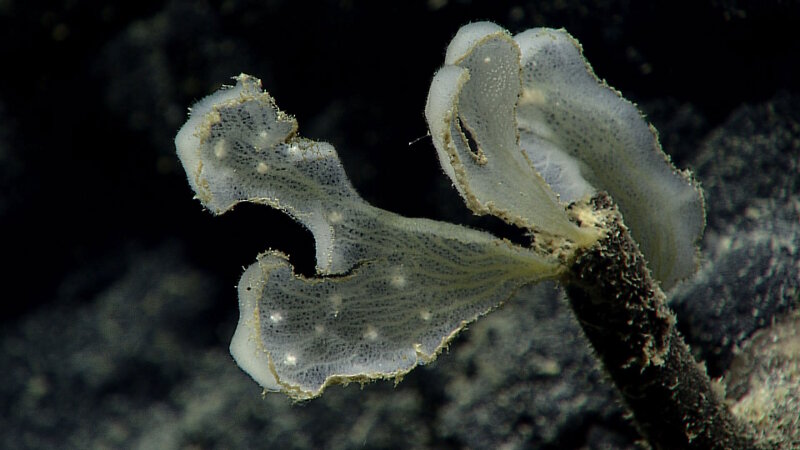Dive 15, the second in our series to characterize communities living on ancient manganese-encrusted seamounts, took place at Enrique Seamount located just east of the Mariana Trench. We descended to a depth of 2,268 meters along a ridge and landed in an area of lightly sedimented manganese-encrusted rocks, one of which we collected early in the dive. We were surprised to find pillow lavas at this site and speculated that more recent partial melting, due to subduction processes, may have formed them. Because the terrain was much steeper and more fractured than expected, we moved slowly to avoid obstacles. Toward the end of the dive, we ascended a pillow ridge that was over 25 meters high. We saw a high abundance of both sponges and corals living in fissures within the ridges early in the dive and high densities of sponges on the lower and middle portion of steep walls. We saw numerous black corals (antipatharians), and also saw the octocorals Hemicorallium sp. and Pleurogorgia miltaris. We saw many sponges, included Poliopogon sp., Tretopleura sp., and others from the family Euretidae. We collected an unusual colony of small sponges with unidentified white spots on their surfaces. Fishes encountered included a cusk eel (Bassozetus sp.) and a rattail (Kumba sp.).
